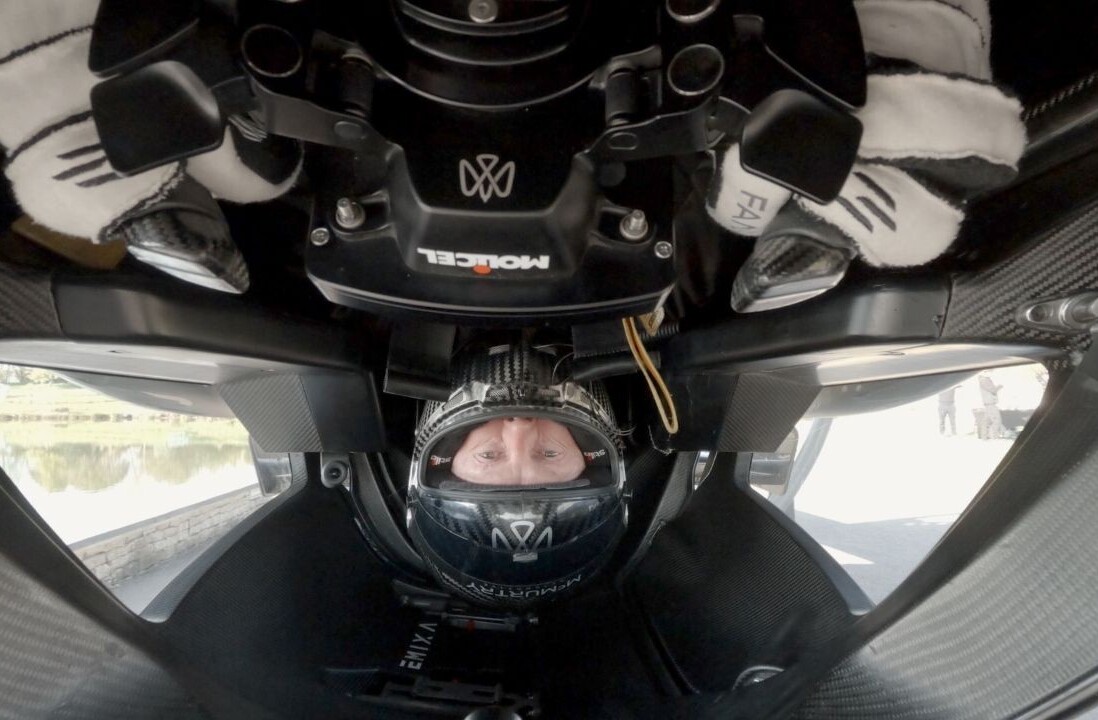
Down rounds, corrections, and adjustments. These are just a few of the gloomy terms you have likely heard a lot of in European tech in 2023.
It has been a year of bleak headlines in tech — and European startups, scaleups, and giants didn’t escape the trend. Job cuts have been a common theme and valuations have been slashed.
We saw Hopin, the digital events startup that was once a darling of VCs at the height of lockdowns, fall from a valuation over $7 billion to a sale worth just $15 million.
These types of scenarios were on the minds of investors and executives that gathered in Helsinki for the Slush tech conference at the end of November.
Venture capital firm Atomico had just released its annual State of European Tech report. The expansive research, which assesses funding trends and investor sentiment, has become the must-read report every year for Europe’s tech industry, taking a deep dive into the challenges and successes in the region.
This time around, the focus was much more on the challenges rather than the successes.
AI silver lining to bleak funding cloud
Funding in European tech dropped 43% this year, down from $82 billion in 2022 and $100 billion in 2021. Inflation, higher interest rates, cost cutting, and not to mention geopolitical tensions, have all contributed to a frostier atmosphere for investors across multiple sectors.
Artificial intelligence, unsurprisingly, is the silver lining amid the bleak clouds, with investors continuing to pump substantial money into the technology. It has created a mixed picture to parse as 2023 comes to a close and a new year beckons.
“It really has been a complex year to unpack, amidst high inflation and interest rates as well as continuing uncertainty, securing new customers and partners and access to capital has been even more challenging this year for both founders and investors alike,” Tom Wehmeier, head of intelligence at Atomico, said.
2024 European tech funding outlook
The current state of European tech funding — and indeed the broader global picture — has some unique traits.
The downward trends in the tech sector from mid-2022 onwards came after a time of heated growth in tech, characterised by bumper funding rounds and inflated valuations.
Covid-19, at its peak in 2020 and 2021, fuelled a drive toward digitalisation and more business for tech companies. In the aftermath of lockdowns, however, companies saw that rapid fire growth stall. This led to the waves of job cuts we’ve seen at many companies, from Meta and Google to scaling startups.
“I think in general my biggest takeaway is that if you look at the numbers and if you also look at the market sentiment, of course there was a bit of frustration in the market after the golden years of [2021 and early 2022],” Andreas Schwarzenbrunner, partner at Speedinvest, told TNW.
Speedinvest primarily invests in early-stage funding rounds.
“We reached a low last year and at the beginning of the year, people were still cautious but you can see and feel that there’s more optimism again and overall the funding volume has been up against 2019,” Schwarzenbrunner said.
Investors and other attendees at Slush that spoke with TNW said they feel like the correction period is drawing to an end and sentiment is returning to something similar to 2019.
For VCs hoping to raise new funds from limited partners, that could be a good sign.
Anette Nordvall, partner at Butterfly Ventures, said that raising its most recent fund was difficult. The fund invests exclusively in the Nordics and in deep tech startups. However, the VC firm is now preparing to expand its remit with its next fund.
“We have more companies that we can invest in, and then the next coming fund that we’re planning will be pan-European instead, so we will broaden the scope of where we can invest, not necessarily what we invest in,” Nordvall said. It’s a “natural step” for the firm to take, she added.
“We’re planning it during spring 2024 so we will probably start fundraising by the end of 2024 or early 2025,” she said.
AI will remain the star in 2024
But there are two letters that still dominate every discussion: AI.
The generative AI craze of the last year has seized the attention of investors. While some VCs were reluctant to loosen their purse strings in 2023, they have not had such inhibitions when it comes to AI.
This is more than evident with France’s Mistral, the generative AI startup that raised €105 million just one month after founding (and last week raised a further €385 million), and Germany’s Aleph Alpha bagging €500 million in its Series B round.
Eleven AI companies raised “megarounds” of above €100 million in 2023, according to Atomico’s report.
Investors are clearly hoping to hitch their wagons to the future’s brightest technology. That’s good news if you’re an AI startup but perhaps not if you’re in a different field.
“The capital market for scaleups specifically is not the best as you know, unless you’re an AI [company],” David Nothacker, the chief executive of German freight forwarding startup sennder said.
Sennder has raised over $300 million across several rounds from several big-name investors like Accel and Baillie Gifford and it acquired Uber Freight’s European business.
Nothacker said that sennder is now focused on reaching profitability. Raising capital is not on the immediate agenda and while Nothacker doesn’t rule it out, he’s cognisant that raising the company’s next round of funding will be a challenge.
“If you are [at the] growth stage and you’re not in AI, it’s extremely difficult, if not impossible,” he said.
“I would say it’s quite tricky at the moment if you are a scaleup, especially in Europe more than in the US, that is not in AI. It’s tough to raise money.”
Climate tech “key topic” for Europe
That is not to say that all VC money has been ring fenced for AI. Speedinvest’s Schwarzenbrunner said that climate tech is front of mind for investors too.
Similarly, the figures in Atomico’s report bear this out. The carbon and energy sector accounted for 30% of investments in European tech in 2023 — a three-fold increase on 2021 figures.
These companies will need a lot more money to realise the potential of their businesses, Schwarzenbrunner explained.
“There’s just a lot of demand for climate companies but I think a lot of it is very early days. If you look at the real climate tech companies in Europe, there’s hardly any really great companies that are Series A and beyond. [It’s] slowly starting, so there are slowly more seed companies moving to Series A but the whole market is still comparatively young,” he said.
Schwarzenbrunner leads much of Speedinvest’s climate-related investments.
There is an increasing number of VC funds in Europe focused on climate, investing in sectors like energy and sustainable food and farming.
World Fund, which launched two years ago and is raising a fund of around €350 million, has invested in several energy and food startups so far. Contrarian Ventures, another climate investor, is raising a €100 million fund.
“There’s a lot of capital and there are a lot of new climate funds investing. I think it will be a very critical, very key topic for Europe,” Schwarzenbrunner stated.
Europe has a great deal of industry, whether it is transport or logistics, that are all large carbon emitters, he added, but they are ripe for decarbonisation. He expects more startups to emerge in Europe aimed at tackling these industries.
But he added that the scars of 2022 and 2023’s downturn will still be haunting investors. He does not foresee capital flowing in the same way as 2021 any time soon nor will the valuations be close to what they were.
Speedinvest’s portfolio startups have “got this message”, he added, and are focusing on getting the balance right between growth and a path to profitability.
Startups need to nail these fundamentals more than ever, he explained. “This is the new reality that is going to stay and I think this is also what investors in the late stage want to see.”
“Wait and see” on tech IPOs
Going public remains elusive. One investor told TNW that the vibe around IPO markets is “wait and see.”
This year’s biggest tech IPO was the Nasdaq debut of British chip design firm Arm but Atomico’s Wehmeier thinks that “we have yet to see a full reopening of the IPO window materialise.”
Many hoped that Arm’s listing would be a moment to shake off the cobwebs for tech IPOs, opening up the field for others to follow suit. That hasn’t quite happened but 2024 is rumoured to have a number of listings on the horizon, such as Reddit and Chinese online ultra-fast fashion retailer Shein.
However, no such fervent rumours abound about European tech firms making the leap to the public markets, and for those that do, the New York Stock Exchange and Nasdaq are still the venues of choice.
“The reality today is that companies will still list in the US,” Wehmeier said.
Schwarzenbrunner points out that companies cannot take making the move to a public listing lightly, especially in the current environment.
“Companies that are moving into an IPO, they need to do their homework,” he said. “As we said before, like moving into profitability, reducing cost, etcetera. Be ready when the window opens. I’m not sure if this is so soon but it will come.”
Europe’s tech ecosystem believes the worst of the storm has now passed. However, while there are positive signals to be found, clouds still linger over the funding landscape and public markets, meaning startups and investors alike will be approaching 2024 with a distinctly cautious optimism.
Get the TNW newsletter
Get the most important tech news in your inbox each week.





